The Fifth State of Matter
Come celebrate the 25th anniversary of some Nobel-prize-winning science: the fifth state of matter, a strange quantum soup known as a Bose-Einstein condensate. What is it, and why is it at the cutting edge of physics? Plus, in the news: signs that 2 metre social distancing is twice as effective as one metre; an app that can help you avoid encountering COVID-19 when you shop; and two astronauts blast off to the International Space Station...
In this episode
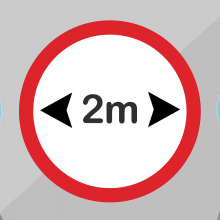
01:05 - Two metres better than one, says review
Two metres better than one, says review
Holger Schünemann, McMaster University
The UK government’s coronavirus advice is still to keep 2 metres apart - but the World Health Organisation has been recommending 1 metre. Well new research, funded by the WHO itself suggests: yes, two metres is better. It may even be twice as effective at stopping the virus spreading as one metre - although these are transmission rates of 2.6% compared to 1.3%, so not huge in absolute terms. These results are from an in-depth review of the science published on the subject so far - which Phil Sansom heard about from lead researcher Holger Schünemann…
Holger - We found that physical distancing, the use of facemasks, and eye protection reduce the risk of SARS-Cov-2 virus transmission and infection.
Phil - Really? So all these things that we've been told to do - they do actually seem to work?
Holger - Yes. Up until now we had individual studies looking at many of these issues and that often leads to somewhat variable results and interpretations. What we did was we looked at all of the available evidence, and summarised and synthesised them using sophisticated techniques that we call meta-analysis.
Phil - So you're going through past research on all of these things?
Holger - That's right. There is always a degree of random error in every single piece of research, and these types of techniques that we utilised try to reduce both random error, as well as potential bias in research or systematic error. We found 170 studies that fulfilled our inclusion criteria. They were done in 16 countries, in six continents. After going through all of these studies, we found 44 studies that allowed us to make comparisons that we were actually interested in.
Phil - And just to clarify, are these people who have studied how well these things work for this coronavirus, for COVID-19?
Holger - We included studies that looked at COVID-19, but also studies that included SARS - which was an epidemic that took place in the early 2000s - and MERS. These three diseases are caused by very similar viruses. For the question about distancing, we found moderate-certainty evidence; we found low-certainty evidence for the use of masks; and we found low-certainty evidence for the use of eye protection. Now this is all due to the fact that the studies that we identified were what we called observational in nature, as opposed to randomised control trials.
Phil - What about - did you find that keeping one metre apart from other people made a big difference compared to, for example, keeping two metres apart from other people?
Holger - Yeah. What we found was that keeping two metres apart might be more protective than keeping one metre apart. It seems to provide a twofold increase in protection.
Phil - Wow. So a lot of people right now are asking... hoping that these restrictions are going to get eased a little bit, we'll go down to one metre. It seems that you've found that's actually maybe not a great idea.
Holger - We are not providing guidance or recommendations. Many factors will influence whether or not a policy of one metre should be implemented, one and a half metres, or two metres. One thing that we could say is that if you have a policy of two metres and it is accepted, that might provide greater protection than one metre.
Phil - And does it make a difference whether you're inside or outside?
Holger - Difficult to answer for the time being. Outside, obviously there are lots of other factors that influence whether or not the virus potentially might spread; for instance, wind, the number of people that you're exposed to. Inside typically exposure is for a longer period of time, possibly. So this data doesn't necessarily allow us to solve that puzzle.

05:22 - An app for avoiding busy supermarkets
An app for avoiding busy supermarkets
Yohan Iddawela, London School of Economics
As lockdowns start to ease, public spaces like supermarkets are likely to become more crowded. That’s a worry if you’re at high risk from COVID-19, or you live with someone who is and you’re still trying to shield yourself. The best solution is to go shopping when the stores are quietest. But how do you know when that time is? Step forward LSE Geography PhD student Yohan Iddawela, who told Chris Smith about his app for just that…
Yohan - Crowdless is a free app that shows you how crowded supermarkets are, so you can choose a less busy time to attend or a less busy alternative.
Chris - And how did this come into being?
Yohan - It's a funny story actually. We were initially designing a product to help people navigate safely in conflict zones. We were trying to provide real time security alerts to people in conflict zones, so that's when and where a violent incident like a bombing, shooting, or kidnapping took place, so you could avoid violent hotspots and stay safe. We were trying to roll it out in Colombia, when Colombia went into complete lockdown because of coronavirus. So we repurposed the same technology to help people navigate safely during the current pandemic.
Chris - So from Columbia to COVID! How did you manage to repurpose the app to do this?
Yohan - We were using some of the same underlying technology. It's called crowdsourcing technology, where people would input information directly into the app. And that forms a core part of Crowdless.
Chris - Can I download that? Is it in the App Store?
Yohan - It's free to download on the App Store and the Play Store.
Chris - And what am I searching for?
Yohan - You're searching for Crowdless.
Chris - Okay. Crowdless. Okay, here we go. Install. It's downloading.
Yohan - The moment of truth...
Chris - It's asking me "can it access my location". What's that all about?
Yohan - That's about showing you location-specific results. So you want to see supermarkets in your vicinity, and in order to do that we need to know where your location is.
Chris - Okay. So it's started up and there's a map being displayed to me.
Yohan - So that map will show you all the supermarkets in your vicinity.
Chris - Okay. I know where there's a supermarket that I usually visit a few miles from me.
Yohan - Great.
Chris - Right, what's now coming up on the map are big green blobs. Are those the supermarkets?
Yohan - They are. Yes. And green means they're not so busy at the moment.
Chris - Right, so this has located for me a Co-op, and it says the estimated crowdedness is 27%. Now what does that actually mean?
Yohan - A hundred is as busy as it ever gets. And zero means that there's no one in there at any given time.
Chris - The other thing is asking me Yohan is it says "contribute". Does that mean that if I go there, I can now say, "well I'm in here and actually it's heaving with people, the app is wrong"?
Yohan - Exactly. Or alternatively you can confirm the rating. And the more people that use the app and contribute, the better the data is going to be.
Chris - Now how are you actually getting this data? Is it purely people like me walking into that particular store and saying how busy it is? Or are you getting other sources of data to inform this? Because to be honest, I'm quite surprised it found a co-op near me. I live in the middle of nowhere.
Yohan - Co-ops are everywhere, I guess. So we get third party data - that's from services like Google, as well as sensor analytics companies. And these are companies that install hardware in stores that track footfall. So you can think of that as a base layer of data, and then we add crowdsourced data from our users, so similar to the contribute button you were playing with. And that adds a certain degree of accuracy to the data.
Chris - I'm a bit surprised to hear that organisations have already got monitoring in stores to track footfall. How common is that?
Yohan - It's quite common actually. So it helps stores optimise where they place certain items. So to give you an example, a store might hire a sensor analytics company to track where their customers are first going. So if they see that their customers are going to the bread aisle first, they might put the bread aisle at the back of the store to encourage people to walk past other items. So all we're trying to do is surface this internal data and make it broadly accessible to the public.
Chris - And where do I stand now that I've got this running on my phone; it clearly knows where I am because it homed in on my geography; and even when I tried to rate a store just now, as you were talking, which is nowhere near me, to contribute to what I thought the busy-ness was, it said I was too far away and couldn't possibly know! So how much do you know about me now that I'm running this?
Yohan - We know almost nothing about you. So you might also notice that there's no login screen. So we don't actually know who our users are. We just use the location data to provide you with location-specific results, but we don't store that data anywhere.
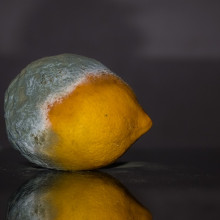
10:29 - Fungus-be-gone: polymers that block fungi
Fungus-be-gone: polymers that block fungi
Simon Avery, University of Nottingham
Scientists from the University of Nottingham have developed a material that stops fungi from growing on surfaces. Welcome news for those who have ever had to clean black mould out of their bathroom! They use polymers that can be 3D printed, and that are designed to tackle a wide variety of damaging fungi - from human pathogens to crop diseases. Unlike fungicides, which can be toxic, these materials appear to be safe at least for plant use - and given that fungal infections are responsible for around a million and a half human deaths worldwide every year, could end up being much more widely useful. Simon Avery helped lead the research, and spoke to Chris Smith...
Simon - Well one of the problems with fungicides or antifungals is these can kick around for a long time, and there are environmental concerns around that. There are tight regulations - and the regulations are not easing, they're tightening - about the use of these fungicides. And also fungi, like bacteria with antibiotics, they can develop resistance.
Chris - And therefore you wanted something that was safe for widespread use, would surmount the problem of growing resistance, and could be easily used?
Simon - Well yes, we were interested in developing a method that didn't involve killing action, because that's where this toxicity and environmental concern comes in. We were interested in actually blocking what is usually the first step of most of the problem that fungi cause, and that is attachment. To cause disease, or even to grow between tiles and grouting in bathrooms, they need to attach to a surface first. If you can block that, then in principle you can block the subsequent problem.
Chris - So is this antifungal equivalent of Teflon, nonstick surfaces, then? You've got something you can put onto a surface, and it just means that if any fungus did try to land on that surface, it can't gain a toehold and therefore it can't start to proliferate or grow?
Simon - I quite like that analogy.
Chris - What is the actual chemical itself? How have you done this, and will this work on a slice of bread as well as it will work on a bathroom tile?
Simon - Well, the chemical... we have a few of these polymers which appear to be very effective. A slice of bread presents a more challenging surface. And also of course, then it's directly onto food, and so there are other challenges there. But we've tested plant surfaces, and they work effectively on those; and glass; plastic surfaces; 3D printed parts we've made as well...
Chris - And does this work against the whole repertoire of fungi that a bathroom tile,, right through to the ear of barley or wheat, might encounter; or is it horses for chemical courses, we're going to need different types of treatment for different indications?
Simon - We've been testing about five different types of fungi: human pathogens, crop pathogens, and the types of fungi you find around the house. The same material won't necessarily work for all types, but then you wouldn't want the material to be usable in that way. There's no reason if you're using it on a crop for it also to give resistance to human pathogens. But we have found materials which work against two or three of the five fungi that we've tested. So that's particularly promising
Chris - What's to stop the microbial world doing what it does best and evolving to just sidestep the blockade imposed by your new chemicals?
Simon - Yeah, it's a good question. If with an antibiotic the bacterium doesn't develop resistance, it will die. So there's a strong, strong pressure on the bacteria to develop resistance. With this, because we're not killing, there's a much lower pressure. And so we anticipate - and we've started these sorts of tests - that the evolution of resistance will be much, much slower, if it happens at all.
Chris - And safety? Because one of the other major considerations is safety in terms of, if you're going to put this on something people are going to eat, that's a major consideration; but also environmental safety, if we're going to be spraying this sort of thing on crops, can you reassure us that these are potentially safe treatments?
Simon - We don't expect, and indeed we've not seen, significant toxicity. And in fact, in humans these have a long track record of safety. One of the advantages in humans, if they're used in humans, is that they don't degrade, and so they don't release potentially toxic products; but in the environment of course, ultimately you would want them to degrade. Modifications can be made, and we've been planning some of those to make these more biodegradable if it's needed for a particular application, such as crop sprays.
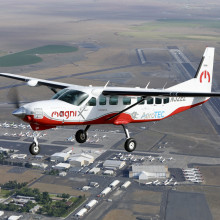
16:28 - All-electric plane takes flight
All-electric plane takes flight
Roei Ganzarski, MagniX
The largest ever all-electric aeroplane has recently been on its maiden voyage. It’s a 40-foot-long, retrofitted Cessna, that spent half an hour in the air without a drop of fuel. That’s a big deal for air travel because the industry has found it hard to come up with anything green that packs the same energy punch as traditional aviation fuels. This electric plane’s creators are from a company called MagniX, and they claim these planes could be commercially viable within 5 years - although larger versions might not appear for another 3 decades. So are these planes really a way forward? Eva Higginbotham has been speaking to the head of MagniX, Roei Ganzarski...
Roei - What we did last week was the largest commercial aircraft to fly all electric: a Cessna Grand Caravan. It's an aircraft that traditionally will take anywhere between 9 to 14 passengers plus pilots, depending on the configuration. And right now we've converted it to all electric. And last week we started flying it all electric. The Cessna Caravan is one of the two most prevalent middle-mile aircraft flying around the world today. There are literally thousands of these aircraft that take packages or people on short distances. And so being able to take it electric, and mean that it can go on lower fuel or no fuel, lower operating costs, and zero emissions, means that these thousands of aeroplanes can now provide a much better service, and a much cleaner service to the passengers or packages that are taken on it.
Eva - So if it's about saving money, why is it cheaper to fly an electric plane than a regular plane?
Roei - Fuel is expensive. Overall, it's much more expensive than electricity. The flight we just did with a Cessna Grand Caravan, we spent a little under 6 U.S. Dollars for that 30 minute flight, in electricity. If it was a regular Cessna Grand Caravan on the traditional internal combustion engine, we would be spending about 300 U.S. Dollars on fuel alone. The second main aspect is that 30% of an aircraft operating cost per hour is the maintenance of the engine. So between the fuel and the maintenance, we're looking at about 40 to 80% lower cost for every hour of flight and that's significant.
Eva - And so to get this plane off the ground, do you need really, really big batteries, I assume?
Roei - The batteries today are not as good as we would like them to be. For example, on a Magni-fied aircraft - meaning a retrofitted aircraft - we could probably take nine passengers about a hundred miles, plus/minus; but if you take an all new electric aircraft that's designed to be electric, like the Eviation Alice for example, for which we are also providing the propulsion system, they can take nine passengers over 500 miles. So five times as long using the same battery technology. Why? Because their aircraft was designed to be a flying battery of sorts.
Eva - And how long might it take for their battery like that to charge?
Roei - Yeah, so we did a 30 minute flight and using a supercharger, a car supercharger, like for example what you would find at a Tesla location, or a Kia electric location. It would take about a one to one ratio. So a 30 minute flight will be 30 minutes to charge, maybe up to 45 minutes to charge. So by all means not as fast as refueling, of course, which would take only minutes. But if you think about it being able to travel for 30 minutes, and then be on the ground for 30 to charge is not a bad deal, when you think about the fact that you're at costs 40 to 80% lower and creating zero emissions for the environment. So overall it’s not a bad trade off.
Eva - Are there any limitations to electric planes as they stand now, and also as they might develop in the future?
Roei - Yes. Right now the biggest limitations are of course, batteries. I will say upfront. I don't believe batteries will be ever as powerful as fuel. I don't think that will happen. The right question to ask is, given how far I can fly with an electric plane, does anyone need it? So for example, I mentioned that the Cessna Caravan can go about a hundred miles. The question is, does anyone want to travel a hundred miles? And if you look at airline data last year, 5% of all worldwide flights were less than a hundred miles of range. In fact, 45% of their flights are under 500 miles of range.
So if you think about that, taking an existing aircraft and turning it electric, even though it has a limited range today of a hundred miles, will still fly 5% of worldwide flights. And the new electric aircraft, like the Eviation Alice, while only, quote unquote, being able to do 500 miles, that covers 45% of worldwide flights. So the demand, most of our people fly short haul. However, there is work going on to start with a hybrid capability, meaning having electric motors turning those propellers, but having some sort of range extender that's gas based providing some of the electricity. And so from that perspective, we will probably, most likely, see larger aircraft start as a hybrid. And then eventually, as either battery or fuel cell technology gets better, we'll then see them go all electric.
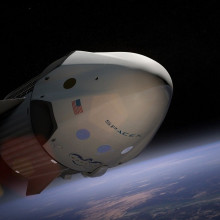
21:55 - SpaceX rocket carries astronauts to ISS
SpaceX rocket carries astronauts to ISS
Victoria Gill, BBC
On the 30th of May, just after 7.20pm GMT, a SpaceX rocket launched two NASA astronauts into orbit. They’re now safely aboard the International Space Station. 10 million people watched the launch live - the first time ever that a private company has flown humans into orbit. To find out what that might mean, Katie Haylor spoke to BBC science and environment correspondent Victoria Gill...
Victoria - The cool thing about this particular spacecraft, about the Crew Dragon capsule, is that that whole journey was fully automated. Basically the capsule's kind of pre-programmed, it knows its way to the International Space Station. So the plan was for the two astronauts, Bob and Doug, to not do anything, they would just have to sort of monitor all of the systems. Then the plan is for the future for it to operate like a space taxi. They even talked about being able to get some sleep while they were on their way up there. So it appears that all of the instruments in the navigation and everything that was automated worked as it should.
Katie - Wow, so it went pretty well then!
Victoria - Seems that way, yes. If you've watched any of these test launches, there's just cameras absolutely geared up to watching and sharing, and kind of bigging themselves up to the whole world. So it's an incredible thing to watch. But one thing that you could watch was the astronaut’s-eye view from inside the capsule. And it's interesting because the instrumentation panels are all just touchscreen. These spacesuits were designed with the help of Jose Fernandez; he designed some Hollywood costumes for some of the superhero comic movies, and so they look pretty much like that. They look very futuristic and kind of strange, and they've had a lot of attention. Their gloves are actually touch screen sensitive. So it was quite an amazing, pretty futuristic looking view from inside the capsule. And it just seems to have gone very smoothly and even docked automatically as well.
Katie - If it's automated then are the astronauts kind of practicing when they're in there? Do they... I'm guessing they need to know how to take over in the event of an emergency, right?
Victoria - Absolutely that. They need astronauts on board that are going to be able to take over and manually operate this space capsule if anything goes wrong.
Katie - How significant is it that this spacecraft was commercially made?
Victoria - I was actually speaking to Tim Peake, British astronaut who was like most of us locked down at home, watching this launch very excitedly and nervously over the weekend. This was the start of a new commercial era in space travel, as he was telling me.
Tim - Since the shuttle retired in 2011, we've been relying on just the Soyuz rocket. And whenever you have a space program you don't want to rely on just one vehicle. I mean, in that period of time the Soyuz has had a couple of problems and it's left us in a very vulnerable situation. So now we have redundancy, which is great. But also, of course, last night's launch and the success of this mission will pave the way for Europeans to be able to go to space on that vehicle in the future.
Katie - Are there other players besides SpaceX at this kind of level?
Victoria - So the two main ones now are SpaceX and Boeing, and for the European Space Agency, the next flights for their astronauts are going to be hopefully aboard the Boeing Starliner. This is a big contract and a big point in an important commercial relationship between NASA and SpaceX. So 2.6 billion pounds transportation contract, that basically means that they can get astronauts to the ISS and hopefully back from the ISS; obviously that's the next part of the round trip. But it's significant that SpaceX got there first. And I think Elon Musk, enigmatic tech billionaire that he is, was crowing reasonably loudly about that.
Katie - Is the idea to reuse this system?
Victoria - That is a big USP for SpaceX, is reusable rockets. And it's been something that Elon Musk has been very vocal about: that space travel, as mindblowingly expensive as it is, a lot of money can be saved if we're not just throwing away these incredibly expensive propulsion systems. That's a big part of what they want to do. And they do seem to have been successful at least in testing it. So now they can move forward into fulfilling the part of that contract where NASA get what they want out of it, which is basically the time and resources to spend going, as Tim Peake says, beyond to the moon and to Mars.
Tim - What the national space agencies would like to do, of course, is to slowly hand over operation of the entire International Space Station to commercial companies, and for them to be a customer themselves. So SpaceX is a model which we're using to try and embrace for low-Earth orbit. And what that does is it frees up the space agencies to go on with exploration to the moon and Mars. So we've already taken that same partnership that we have with the International Space Station, and that same group of nations are planning a new space station to go in orbit around the moon, which will help to facilitate lunar landings in the mid to the late twenties.

27:34 - Hydroxychloroquine study retracted
Hydroxychloroquine study retracted
An update on a previous story from Chris Smith and Phil Sansom...
Chris - A key study which we covered in last week’s show has been retracted. This was all about hydroxychloroquine, the drug proposed as a possible COVID-19 treatment that was famously endorsed by Donald Trump.
Phil - This study, published in the Lancet, seemed to show evidence that the drug didn’t work and might even be harmful to COVID patients. After aspects of the work were questioned, requests were made to verify the patient data used in the study, which were supplied by a company called Surgisphere.
Chris - But Surgisphere have not released the data, citing confidentiality as the reason. This terminated the review process and led to the paper’s retraction. That said, other more reliable trials analysed since have also concluded that hydroxychloroquine is of no benefit in COVID-19. So we can probably assume that we're not going to have to use it or worry about it furtuer.
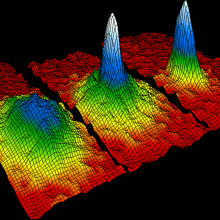
29:36 - Bose-Einstein condensates, explained
Bose-Einstein condensates, explained
Rob Nyman, Imperial College London; Lindsay LeBlanc, University of Alberta
We're celebrating the 25th anniversary of a Nobel Prize-winning achievement: the creation of the 'fifth state of matter', a bizarre soup of particles that’s known as a Bose-Einstein condensate. It’s one of the more complicated concepts in physics, but that very complexity is what makes it mysterious and exciting - with implications for quantum computers, dark matter, and the very fabric of the universe. Where does this idea come from? Chris Smith heard from two Bose-Einstein condensate physicists: Lindsay LeBlanc from the University of Alberta, and Rob Nyman at Imperial College London...
Rob - Satyendra Nath Bose was an Indian mathematician who made some realisations about the statistics when you count the ways of arranging identical particles. In quantum mechanics, there's a particular concept of identical particles. So identical that you couldn't stick a label on them, even in principle. And that's what Satyendra Nath Bose realised. And he tried to get his work published. He wrote to lots of journals and they all said no, because they didn't understand his work. And eventually in despair, he wrote to Einstein and said, "can you please see if you understand it and maybe get this published?" And Einstein immediately understood it, and did some calculations himself and realised that one of the consequences is Bose-Einstein condensation. He translated the paper into German and helped get it published in a German article.
Chris - And how long ago was that?
Rob - Satyendra Nath Bose wrote to Einstein in 1924, and Einstein published his article in 1925.
Chris - So this is another example of work which was theorised almost a century ago, but has taken until almost the modern era and technology to catch up so we can actually start working on the ideas that these people had?
Rob - Absolutely. It's a simple idea, where Einstein had a thought experiment about simply adding a few more particles to a system. And they all collapse into one state, which is the essence of a Bose-Einstein condensate. He had that idea, and it took 75 years before we could actually make them into a real experiment rather than just a thought experiment.
Chris - As I mentioned, Lindsay LeBlanc is also with us. Lindsay is at the University of Alberta, she works on this too. Lindsay - what actually is a Bose-Einstein condensate, though? If we were to actually see one in a dish, what would it look like?
Lindsay - Well for first thing, it's quite small. And so you need a microscope of sorts to see it. It's a collection of atoms where all of these atoms are no longer individual particles anymore. They become almost like a super atom - they all behave together. They work together and they create this sort of new quantum soup that has different characteristics than the other kinds of matter that we know about.
Chris - Now, when you say that they all behave as though they're one - when we're just got individual atoms, they would just be buzzing around all over the place, going in random directions. How do you actually turn them then into a Bose-Einstein condensate so they behave as though they're just one atom?
Lindsay - The first thing that we need to do to make a Bose-Einstein condensate is to make them very cold. The ideas of quantum mechanics start to emerge when things are cold, because we are able to get rid of the randomness associated with temperature. So we think of hot things as, exactly, buzzing around in a random way. To get to the Bose-Einstein condensate, we need to get rid of that randomness. And so we need to cool the atoms down to very low energies. And this comes back to the original ideas of Bose and Einstein, where: why does this happen? It happens because the world is quantum, and we could only see this at these very low energies when things are very cold.
Quantum means that there are discrete levels. And so you can have, say, zero, or one energy unit, or two energy units; but you can't have like 1%, you can't have just a little bit, you have to have either zero or one. And so if you get cold enough, suddenly these particles don't have enough energy to be in that first energy unit. They have to be in the bottom one. And so they're all acting together in this condensate. Experimenters like me and Rob in the lab, we have to figure out ways to get those atoms that cold. And that was really the technical achievement that was made possible by lasers and all the developments through the 80s and 90s that brought us the first Bose-Einstein condensates in the lab.
Chris - And Rob, when we actually think about the way these things are behaving, are there any good sort of analogies that you can give me, which would enable me to imagine atoms all behaving as though they're one giant atom instead of a collection of atoms?
Rob - Yeah, I think probably the clearest analogy for me is that a Bose-Einstein condensate is to an ordinary balloon full of gas, as a laser is to a light bulb. Very, very intense and everything is moving together. So lasers come in beams; light bulbs spread out. And lasers can be much brighter than light bulbs. Just like Bose-Einstein condensates can have high densities, but also the particles move together.
Chris - And Lindsay, when we get down to this low temperature and we make atoms get into this configuration, what sorts of properties do they have that get physicists like you excited?
Lindsay - The fact that they are quantum particles, but there are many of them means that I can work with them. So they're big enough that as an experimentalist, I can do something useful with them. There's many different things that people have figured out what to do with them over the last 25 years. Some examples include quantum memory, which is something we work on in my lab. We take the atoms and we use their quantumness to store quantum information, which is very much related to this revolution in quantum computing that is going on around us. We're able to use the quantum properties of this macroscopic object, to grab onto information, hold onto it and then retrieve it sometime later. So it's almost like RAM or a hard disc for a quantum computer. Other applications include generally understanding the fabric of our universe. So this is a quantum object that we can manipulate, that we can study, that we can take pictures of. And what we can do in the lab is sort of poke and prod it in different ways to see what happens to quantum objects under these conditions. And so we use these condensates as a simulator of other quantum systems to learn more about how many body quantum systems act in a variety of contexts.
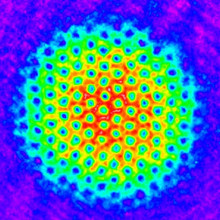
35:53 - Carl Wieman: from theory to reality
Carl Wieman: from theory to reality
Carl Wieman, Stanford University
Bose and Einstein first predicted their ‘quantum state’ in 1925, but physicists spent the next seventy years trying create it. Then, in 1995, two groups independently got there - an achievement that netted three men a joint Nobel Prize. Their technique was to cool down atoms of Rubidium using lasers - because rather than heating, lasers can make the atoms absorb photons and so, on average, slow down and become extremely cold. Carl Wieman is one of the three Nobel laureates - and he told Phil Sansom the story...
Carl - It actually begins with us playing around with lasers for other purposes, and realising that we had the capability to do laser cooling - a few millions of a degree above absolute zero. We realised that people who had been trying for many years to make Bose-Einstein condensation, they weren't really thinking of the problem in the right way. Okay. So I have to take a quick step back here.
Phil - Sure.
Carl - Bose-Einstein condensation happens when you have the right coldness and denseness of atoms in a gas. Our approach, I like to call it ‘the low road to BEC’, was rather than getting atoms pretty cool with sort of traditional refrigerator things, and then squeezing them together as much as you could, we went this route of lasers; and that meant much, much lower temperatures, but not nearly as high a density of atoms. It took about five years of kind of figuring out how to get all the conditions right, and all the obscure collision processes.
Phil - Did it seem achievable when you were first playing around with getting these atoms ultra cold?
Carl - No. In fact it was explicitly uncertain as to whether it was achievable. Right up until we produced the condensate and saw that it could sit there for a fraction of a second.
Phil - So how did you know when you finally achieved it?
Carl - It was spectacularly clear. And in fact, I made sketches five years earlier to show people what ideally it would look like. And it looked just like that. You have this little brown cloud of atoms that we held in this magnetic trap. And as we got colder, it goes through a transition. Just like - not just like, but somewhat like - water vapour freezing into ice. You see this much higher density little peak. Our first reaction was "gosh, too good to be true! Turn all the knobs, make sure, test it in all the different ways we can just to make really sure that we're right on this".
Professor Cornell, Professor Ketterle, Professor Wieman, your groundbreaking work on Bose-Einstein condensation has opened up a very fruitful area of research and potential applications. I now ask you to step forward to receive your Nobel prizes from the hands .....
Carl - The point at which we got the prize - I guess this sounds awfully arrogant, but we'd been assured by enough prominent people that was going to be happening, you know, so it wasn't nearly the great shock and delight it can be for some people. It was kind of like, "okay, great. Now I move on to other things."
Phil - What do people often miss, do you think, about Bose-Einstein condensates?
Carl - The interesting part about Bose-Einstein condensates, and it's sort of all the things Einstein never thought about. This is a unique new quantum system, and it's a quantum system you can control in ways that nobody ever could do. In some ways it's a marvellous sandbox.
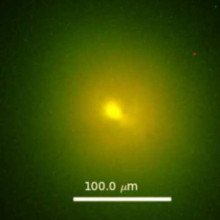
40:30 - Photon BECs: making condensed light
Photon BECs: making condensed light
Rob Nyman, Imperial College London
Imperial College London physicist Rob Nyman is making Bose-Einstein condensates out of photons, particles of light. Chris Smith asked him how it works...
Rob - The wonderful thing about the prediction of Bose-Einstein condensation is it doesn't make any particular comment about what kind of particles they are, other than that they have to be rigorously identical to each other. As long as you can make rubidium particles identical to each other, in combination with coldness and denseness, you can make them into a Bose-Einstein condensate. And the same is true of particles of light: photons. But making them cold and dense is the hard thing. Cold turns out to be a relative thing, and for photons cold can be room temperature, if you could only make them come to equilibrium without them disappearing. So we have to trap them somehow. And the way we trap photons is between a pair of very high-reflectivity mirrors, perhaps one millionth of a metre apart.
Chris - So let me get my head around this then. You put some light between two reflective surfaces. How do we then turn that into something that's cold? How can light have temperature? ‘Cause surely if it's got energy, it's got temperature; and light is energy, isn't it?
Rob - This is true. We have a problem that actually the matter around us emits and absorbs light and it does so in a somewhat randomised way. And if we tried to cool a black box down - that’s the way we typically describe it - it would simply decrease the number of particles. And so we wouldn't... while it gets cold, the density would get low and we'd never achieve that high density and low temperature. So we have to do a special trick, which is we put a dye, a fluorescent dye in between our mirrors; literally the same kind of dye you would use in a fluorescent highlighter pen. And the light is absorbed by the dye and then re-emitted. And the combination of absorption and emission, this exchange of particles with a reservoir of matter; that allows the light to come to thermal equilibrium at room temperature, without the number increasing or decreasing. And now we can just change the number. The way we do this is we essentially shine an overpowered laser pointer at our pair of mirrors until the density gets high enough that the combination of density and temperature is now appropriate to make a Bose-Einstein condensate.
Chris - If you make one of these, what does it actually look like?
Rob - So the images of photon Bose-Einstein condensates in my laboratory look like a kind of a fuzzy spot around, which is mostly greenish-yellow, and in the middle is a bright yellow spot. The greenish fuzz around is what we call the thermal component and the bright yellow spot is the Bose-Einstein condensate in the middle.
Chris - Now Rob, you've done this with photons, these are packets of light; but there's also these notional graviton particles that enable gravity to be conveyed from one body to another allegedly. I mean we've got no proof of them, have we, but would they potentially also therefore form a Bose-Einstein condensate? And if they did, what would it look like?
Rob - In principle? Yes. One could form a Bose-Einstein condensate out of any particles, which first of all need to be rigorously identical, like gravitons, the particles of gravity. And secondly they need to be brought to thermal equilibrium without their number increasing or decreasing. How one would bring gravitons to thermal equilibrium, I'm not clear; I don't see a particular configuration, but I don't see any reason why one couldn't either. If one could, then what they would look like would be a very large scale wave of gravity. Very much like the gravitational waves emitted by for example, orbiting black holes.
Chris - In your experiments, the thing that I'm slightly struggling with is how you manage to make sure that your light doesn't soak into the mirrors, give up its energy and just disappear. And also how you don't end up with the mirrors being warm enough to add just more photons of their own and confuse your results. How do you keep it clean?
Rob - They are extremely good quality mirrors. They reflect something like 99.997%, which means the light bounces around perhaps 30,000 times before it is eventually transmitted through the mirrors. That's enough times for the thermal equilibrium processes of absorption and emission with the dye to happen. So all that matters is that the mirrors are good enough, and in this case, it turns out to be about as good as you can get them buying it from the very best company who can make these things.
Chris - And while it's lovely, what's the point? What are we learning by doing this? And what might be the application of being able to make these photon based Bose-Einstein condenses?
Rob - One of the points is that Bose-Einstein condensation is a phase transition in very much the same way as a vapour can condense to a liquid. That's why it's called condensation. So we can use photon Bose-Einstein condensation to understand what a phase transition is. That's revisiting textbook definitions, reunderstanding, but that's still very academic. The other thing is I'll maybe turn your question about applications backwards. And it turns out that there is circumstantial evidence that photon Bose-Einstein condensation is happening inside devices called VCSELs: vertical cavity surface emitting lasers. Now they sound esoteric, but there's one of those in pretty much every single computer mouse. So it's not absolutely sure, but it seems like photon Bose-Einstein condensation has been going on in billions of devices for a decade and more now. And we just haven't realised it.
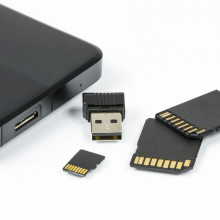
46:47 - Quantum computer memory using supercold atoms
Quantum computer memory using supercold atoms
Lindsay LeBlanc, University of Alberta
Chris Smith asked Bose-Einstein condensate researcher Lindsay LeBlanc, from the University of Alberta, about her research into quantum memory...
Lindsay - The advantages of using these quantum systems for quantum computing is that we are able to harness the unique properties of quantum mechanics to do different and maybe more powerful kinds of calculations using a quantum computer. And that's based on the fact of this quantumness, that there are these discrete energy levels in the atoms that we're working with. And so to start off with you don't necessarily need these atoms to be cold, but you do need them to be quantum. The nice thing about using these cold, condensed atoms to do this work is that, like I mentioned earlier, we eliminate randomness, and are able to control these atoms very carefully.
So we can take that information, which we encode in these different levels by having what we call superpositions - a little bit in the bottom and a little bit on the top - and then spread that across this whole quantum system, which is now, like I said earlier, bigger, macroscopic, easy to control. We can hold onto information and then retrieve it again at a later time. And the condensate makes that cleaner, the storage times can be longer, and we have better access to that information. And so that's one of the things that we're working on in my lab right now.
Chris - Would that mean then that if we did have a quantum computer, and it was going to exploit this physics, it would have to be working at really, really low temperature?
Lindsay - It would be, but only this small part would have to work at these low temperatures. You could think of it as one of the components inside of a PC tower computer. And there would be many different components working together. So this is just one small part of the computer, but one of the necessary parts for, say, memory to work.
Chris - We're talking about something, which it takes enormous lasers, a room full of lasers in order to make this. So can you shrink that down to something that's computer sized?
Lindsay - The hope is that yes. And in my lab, we're doing research. We don't focus on that, but there is actually a company in Colorado called ColdQuanta whose mission is to do exactly that. And I got an email from them just this week saying that a BEC was coming for everyone anytime now. So there are people who are working on that for sure.
Chris - And why will this be a step change for computing? If we do get a computer which works as a quantum computer, why is that any better than my Intel Pentium chip I have at the moment.
Lindsay - It's not necessarily better, but it's... I would say that it's different. It allows us to do different kinds of calculations, to do them more efficiently. There are certain things that quantum mechanics is very good at, and the kinds of algorithms that includes are searching and optimisation. And so it might allow a speed up for that. And then the other side of the coin is actually to do with security. So there are a number of proofs in quantum communications theory that say that information that is passed through quantum channels is unconditionally secure. And so you can have a new level of security that's not based on the random factorisation algorithms that are used at present.
Chris - The flip side of that of course, is as one person put it to me: if we do come up with a quantum computer, it'll be so good at considering all the options that every bit of security we've got in place will become instantly useless. Is that true?
Lindsay - Well that's right, but we need the quantum algorithms. So there's two parts to that. The quantum computer can break traditional security algorithms; but it can also provide a new pathway to a new kind of quantum security.
Chris - So how long before I can plug in my quantum computer and do Facebook on it at lightning speed?
Lindsay - I think it's decades before that happens, but these quantum communication channels to do security are actually they're any day now. And they are working in limited situations already. So that is here.
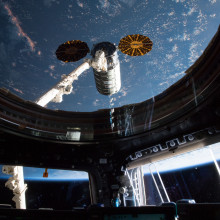
50:40 - Bose-Einstein condensates in space!
Bose-Einstein condensates in space!
Rob Thompson, NASA
To create a Bose-Einstein condensate normally requires equipment that takes up a whole room. But a couple of years ago, NASA’s Cold Atom Lab managed to blast the whole setup up to the International Space Station - and they’re now starting to get exciting experiments underway. Phil Sansom heard from Rob Thompson, the project scientist in question...
Rob - We have built an apparatus that will allow scientists to study ultra cold matter in the microgravity environment of the International Space Station. So we're making Bose-Einstein condensates in space.
Phil - That sounds, on the face of it, super cool.
Rob - Both literally and figuratively, I think, yes.
Phil - Why? What's the point?
Rob - What's the point? Gravity affects these types of experiments. People are doing these on the ground, but almost every terrestrial experiment has at least some sort of effect of gravity that limits how long you can look at the atoms. For experiments that really are trying to reach the ultimates in sensitivity and so on, those types of experiments will benefit by going into microgravity.
Phil - Can you make it concrete for me? How much longer, for example, can you get a Bose-Einstein condensate to last in space compared to on Earth?
Rob - Sure. Ultimately the limits are simply how cold you can get them. The colder the cloud is, the slower a gas will expand, and the longer we'll have to look at it. In our experiment, we're aiming for about five seconds. As far as I know the record on Earth is about two seconds.
Phil - Does the fact that space itself is so cold help with the fact that you need to cool this stuff super cold?
Rob - No, it doesn't. Space while it's super cold, is a couple of degrees Kelvin above absolute zero. And the temperatures that we're trying to achieve are below a billionth of a degree above absolute zero. So while space is relatively cold for most of us, in the context of this experiment, it's actually really, really hot.
Phil - Is it the astronauts up in the ISS that are controlling this and doing the experiments?
Rob - Oh, so we run the experiment entirely from Earth. Basically we can connect up to it as if we're connecting up to a machine over the internet.
Phil - What are you hoping to achieve with your sci-fi space Bose-Einstein condensate lab?
Rob - I really would like us to achieve the goals that our science teams are looking at, because I find them just amazing. Several of the teams are focused on atom interferometry, this ability to use the wave-like nature of atoms to make these incredibly sensitive quantum sensors. And one of those teams is going to test Einstein's theory of general relativity, and also to search for certain candidates for what is dark energy.
Phil - Why should anyone who's not a physicist care about this?
Rob - These are questions, I think that ultimately, are important for humanity to think about and have answers to, but there's also a lot of more practical, potential applications. We can use these atom interferometers as navigation, for spacecraft navigation and exploration and so on. We can potentially use them to help monitor the effects of climate change. As you have things like ice sheets melting, those change the local gravity of Earth in that area. I think there's always this thing that you learn from basic science, basic physics; it always kind of surprises you that it ends up being profoundly important.

54:35 - QotW: Do plants with saponins protect against viruses?
QotW: Do plants with saponins protect against viruses?
Eva Higginbotham and Afnan Azizi tackled this question from listener Denise...
Eva - Saponins are a class of naturally occurring compounds made by several different plants, including ginseng and soapbark. Some agave species are good examples for the saponin rich plants. But actually, most Australian acacia don’t contain saponins.
Afnan - Saponins have various properties, including the ability to act as surfactants. This term means something that helps substances mix together. In other words, saponins can act as soap, helping mix grease molecules with water so that they can get washed away.
Eva - This is particularly important when we think about saponins and viruses - one of the reasons we’ve been told to wash our hands so much is that viruses have a fatty membrane, which can be dissolved by even regular soap.
Afnan - Saponins, as surfactants, can break up this membrane and so in the absence of regular soap, plants containing saponins could be very useful to use as soap for handwashing. In remote small villages, Indian people still wash their clothes using saponin rich plants.
Eva - Saponins will even create a foam when shaken with water, just like regular soap. But what about using saponins as antiviral agents? Well, there has been a bit of research about this over the years.
Afnan - There’s evidence to suggest that certain saponins have antiviral activity against HIV and one version of the herpes virus. There’s even very recent work looking at a specific saponin called glycyrrhizin which comes from liquorice root. It’s been suggested that glycyrrhizin might help against the coronavirus by interacting with various important molecules present in an infection, including cytokines that are part of our immune response, and even ACE2, which is the coronavirus' entry way into our cells. However, a lot more research would be needed before we know whether saponins could actually act as a treatment or medicine for coronavirus.
Eva - Importantly, even though glycyrrhizin is natural it can have some nasty side effects and hasn’t been through any clinical trials to determine whether it works; so we don’t advise you to start chomping down on lots of liquorice just yet. Thanks so much to the experts who weighed in to answer the question this week: Maher Mohamed Abed El Aziz from the University of Tripoli, Libya, and Anthony Davenport from the University of Cambridge, and to Afnan Azizi for reading out our answer. Next week we’ll be teeing off to answer this question from Darren...
Darren - Golf balls are dimpled to disrupt the air around the ball. As far as I can gather, this reduces their drag and allows them to fly further than they would if they were perfectly round. Why do we not see dimpled cars, aircraft, and trains? If this effect is so effective for golf balls, why not use it on Formula 1 cars, for instance?










Comments
Add a comment